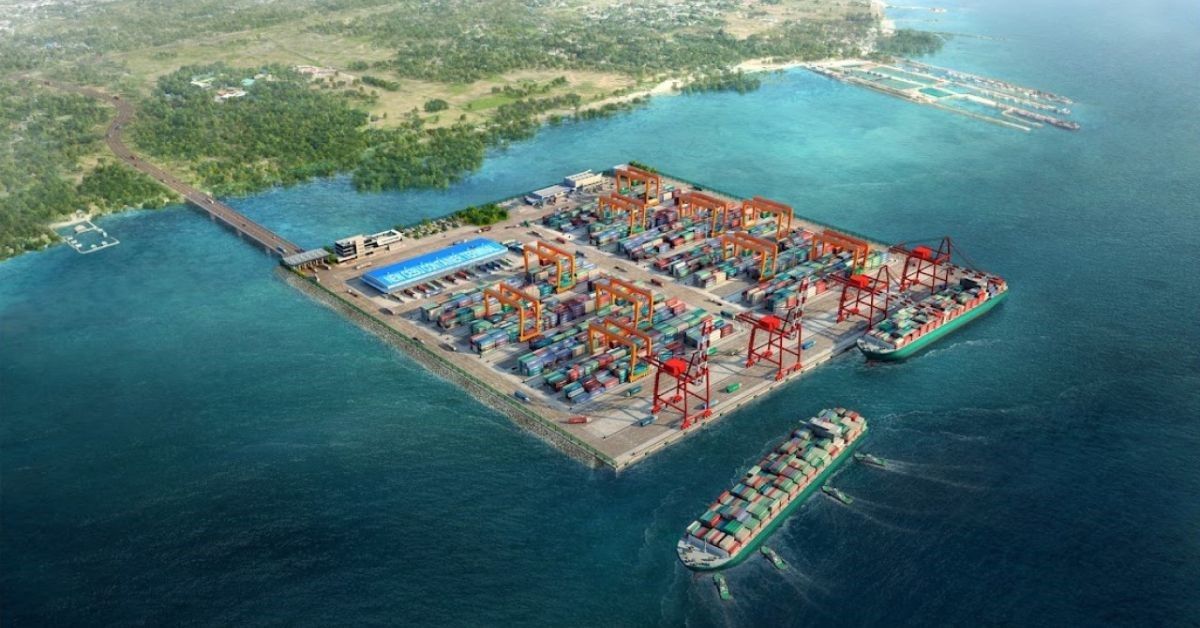On February 5, 23 years after the initial project feasibility study was completed, the New Cebu International Container Port (NCICP) officially began construction. The groundbreaking comes after the Korean company HJ Shipbuilding and Construction Corp., the port’s civil works contractor, received a notice to continue on January 6.
Expected to be operational in the second quarter of 2028, the P16.93-billion NCICP is being built on 25 hectares of reclaimed area in Tayug, Consolacion, Cebu and connected to the mainland by a 300-meter offshore bridge and 1.365-kilometer inland road. With a 500-meter-long berth and water depth of 12 meters, the port should be able to accommodate two vessels with a capacity of 2,000 twenty-foot equivalent units (TEUs) at any given time. The container yard, to be equipped with five quay cranes, can hold 14,400 TEUs. Annual cargo handling capacity will be 375,900 TEUs.
The NCICP will open up space for vessels and cargoes, addressing congestion at the Cebu Base Port and ensuring faster turnaround of commercial vessels while improving handling and container stacking facilities — all of which promote faster and more cost-efficient transport of goods. With the new cargo port, the transport chief said bottlenecks in the logistics chain will be alleviated, with users generating savings on vessel waiting as well as cargo transport and congestion-related costs while seeing higher income from land leases.
Other expected advantages are more job creation, greater local business opportunities, development of regional industries, increased global competitiveness of Cebu industries, and the establishment of Cebu as a regional logistics hub.
National and local governments will also have increased tax revenues as well as environmental cost savings due to better operational efficiencies and modern technology. The issuance of the port’s NTP follows the signing of the contract with HJ Shipbuilding on December 18, 2024, the same day the transaction advisory services agreement (TASA) with World Bank-International Finance Corp. (IFC) was inked. The project has two approaches: civil works which will be funded by official development assistance from Export-Import Bank of Korea (KEXIM), and the purchase of quay cranes that will be under a PPP.
The Philippine government and KEXIM in 2018 signed a $172.64-million loan agreement for the NCICP. The Philippine government will provide the counterpart funding of P1.28 billion. Following the signing of the TASA, Sarmiento said they are targeting to commence bidding for the O&M within 13-14 months from mobilization of the IFC as transaction adviser, or by the first quarter of 2026. Once operational, NCICP will handle international cargo operations while the Cebu baseport will service domestic and bulk and breakbulk shipments. The new international terminal is seen as the long-term solution to growing volumes handled at Cebu International Port, which currently handles foreign cargoes at Cebu baseport.







